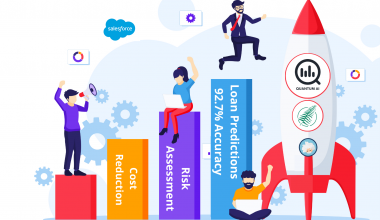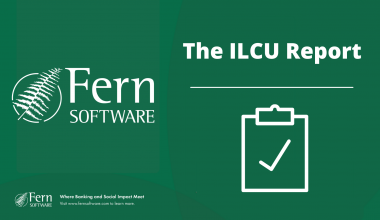Introduction
Software-as-a-service (SaaS) is becoming an increasingly feasible option for businesses looking for increased connectivity, flexibility, accessibility, scalability, and practicality amidst cutthroat competition. A software distribution model that provides cost-effectiveness and versatility to businesses, SaaS is becoming a more reliable choice as SaaS platforms consolidate business models for top-notch efficiency organization-wide. Moreover, innovative technologies powering SaaS have permitted businesses to operate SaaS software solutions and conduct online data analyses without having to install and run applications on their own data centers.
In 2022, many companies have implemented or are in the process of adopting various business intelligence strategies by relying on business intelligence tools. Consequently, SaaS now monopolizes the cloud computing market. A forecast by Gartner indicated that the worldwide end-user spending on public cloud services will reach 600 billion by 2023. True enough, SaaS has enjoyed increased popularity every year. This article will explore the SaaS trends in 2022 to aid you to make more well-informed software-related decisions for your business.
#1: Artificial Intelligence
Artificial Intelligence (AI) witnessed some key milestones in 2021, and is poised to have a projected market size of USD1811.8 billion by 2030 according to a Grand View Research report. Besides, with AI technology fast becoming a regular SaaS industry feature, AI has been making headwaves across various sectors of society. This is because AI offers a greater degree of interaction and agility between businesses, customers, and technology, thus transforming the SaaS landscape in several ways. When SaaS collaborates with AI technologies, businesses can derive better value from their data, automate and personalize services or boost security.
For instance, businesses across industries rely on AI technologies to spearhead greater customizations in product, service, or content. Simultaneously, businesses can leverage more nuanced and data-driven knowledge of their audience’s needs. Also, businesses can tap on AI data to become more efficient with fewer resources. State-of-the-art SaaS-based AI platforms can examine consumer intents, interests, and behaviors while gathering data from various sources to provide business value. Another example would be how technologies like natural language processing (NLP) which automatically processes human speech patterns and voice control can be used to boost customization to better serve client needs in the fields of customer service.
#2: Machine Learning
Machine Learning (ML), a subset of AI, is used in SaaS to boost service output by automating the responsiveness in customer service applications like AI-powered live chatbots. With ML, businesses can examine contextual data and insights more deeply, hence enhancing internal collaboration and operations via better communication models.
As digital transformation across industries rises, businesses across sectors rely on data to consolidate themselves while learning more about their customers or users via such data. Analytics-driven SaaS innovations would thus continue to rise in value, according to industry observers, and thus be useful to businesses for their data-driven decisions. The centralized nature of SaaS models will facilitate data access from any device, at any time, thanks to advanced software capabilities.
#3: Centralized Analytics
In 2022, and beyond, analytics has been touted to become a key feature of almost every service-based software platform, ensuring that businesses remain at the top of the competition.
SaaS in the Financial Sector
As a cloud-based technology, SaaS can contribute to fintech companies and banks by meeting regulatory demands and offering security to their customers, enabling finance companies to save huge operating capital annually. Financial firms have to ensure that software providers contain the operational resources required to meet legislation and other regulations to detect risks to data. Any contract between a financial organization and a third-party SaaS provider should outline how the provider will ensure that the data is secure with proper access management to the data. We explore how the blend of the SaaS model with the fintech sector can stimulate innovation and creativity while maintaining efficiency and profitability.
#1: Access Management
Financial institutions have to stipulate who can access SaaS-based applications and the kind of permissions they require, depending on the user’s roles and responsibilities in the business. In light of this, the SaaS vendor offers a unified framework for managing user authentication based on this access management system.
#2: Regulation and Incident Management
SaaS-based applications can help you to define and document everything in a transparent manner for effective governance, particularly when it comes to financing operations. Particular incidents ought to be recorded, reported, and monitored to the end.
#3: Scalability
SaaS-based applications are highly scalable as they are run by cloud technology, and hence boost the capabilities of financial institutions’ current infrastructure. For example, software providers such as Fern Software with SaaS products like Quantum AI can help financial institutions increase their scalability and operational efficiency to automate loan decisions. Quantum AI is run by Salesforce Einstein machine learning technologies for speedy and precise decisions, saving financial institutions a lot of time and effort. Quantum AI’s flexible and scalable platform as well as its decoupled technology architecture could increase loan volumes by 100% and reduce operational costs by 80%.
All in all, financial institutions nowadays require robust, reliable, and accessible software-centric solutions to meet their goals, and outcomes. The SaaS industry can only get stronger amid global digital transformation, as it can offer financial institutions a more efficient and streamlined future. Financial institutions can tap on the business opportunities that SaaS solutions like Quantum AI offer. By keeping costs down, they can have more leeway to focus on efficient performance as well as increase revenue and profits.






